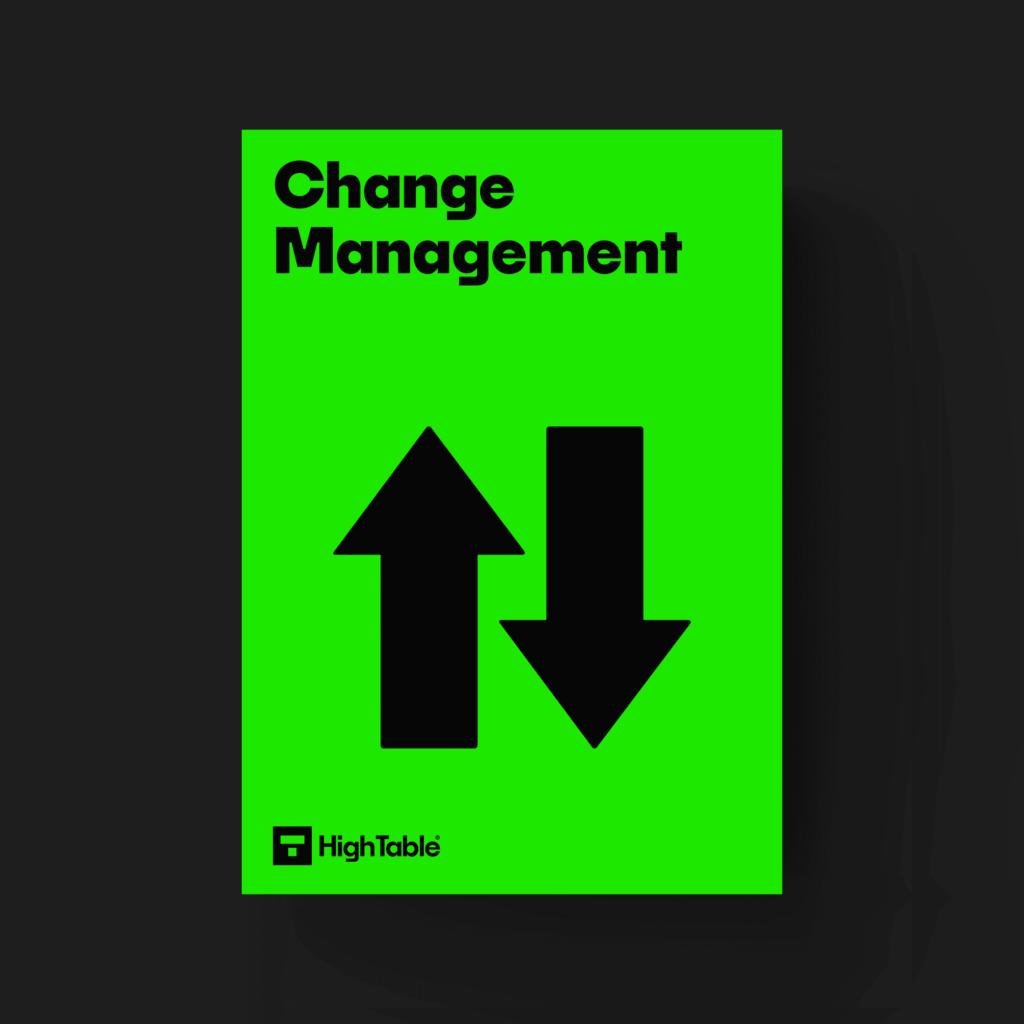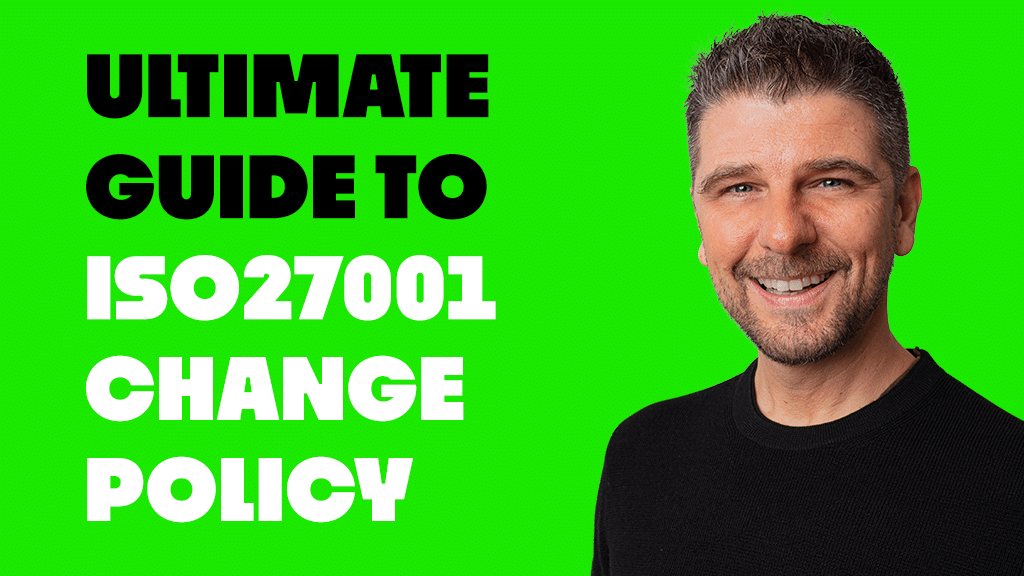Table of contents
- Introduction
- What is change management?
- What is a Change Management Policy?
- What is the purpose of the ISO 27001 Change Management Policy?
- Why does an organisation need the ISO 27001 Change Management Policy?
- ISO 27001 Change Management Policy Template
- Why is change management important in the context of ISO 27001?
- How to implement an effective ISO 27001 Change Management Policy
Introduction
In this article we’ll explore the ISO 27001 Change Management Policy and exactly what you need to do to satisfy it to gain ISO 27001 certification.
We’ll explore what change management is, understand why organisations need a Change Management Policy, show you how to implement one, and let you in on a trade secret that’ll save you hours of time and effort, simply by using this change management policy template.
I’m Stuart Barker: founder of High Table, Information Security expert and ISO 27001 Ninja, and this is the ISO 27001 Change Management Policy.
What is change management?
Change management is a structured approach to managing transitions and transformations within organisations. In the context of information security, change management is the process of making changes to a company’s IT systems, with the objective of minimising errors and disruptions.
What is a Change Management Policy?
A Change Management Policy is a set of guidelines organisations employ to manage changes in a controlled and safe way.
What is the purpose of the ISO 27001 Change Management Policy?
ISO 27001 lays out change management as planning, organising, leading, and carrying out organisational changes. A change management policy is a document containing a set of procedures that help businesses manage changes effectively.
A change management policy should adapt to an organisation’s specific needs and should be updated regularly.
A well-written change management policy will outline how to successfully organise and lead a business through a process of transformation.
DO IT YOURSELF ISO 27001
All the templates, tools, support and knowledge you need to do it yourself.
Why does an organisation need the ISO 27001 Change Management Policy?
Change is an unavoidable part of any organisation’s journey towards growth. But, when it comes to information security, change can present vulnerabilities and risks if not managed correctly.
When issues occur, businesses are affected negatively, which is why it’s important to implement a robust Change Management policy.
ISO 27001 Change Management Policy Template
It can be confusing to work out what to include in a change management policy or where to start. An ISO 27001 Policy Template that is pre written and ready to go can save you a lot of heart ache so that is why we have done the heavy lifting with the ISO 27001 Change Management Policy Template.

Why is change management important in the context of ISO 27001?
Creating a comprehensive change management policy is crucial for successful implementation of corporate changes. Different types of changes, such as those aimed at improving performance or complying with regulations, may require specific procedures.
When developing change management guidelines, it’s important to consider the company’s size and setup. Foe example, bigger companies could have more complicated change management processes than smaller ones, which means that more people may need to be involved in the transformation process.
When putting the policy together, it’s important that it is flexible enough to adapt to future company changes. Changes happen – and as a result – different procedures may be required, so it’s important that the policy can accommodate unforeseen circumstances.
How to implement an effective ISO 27001 Change Management Policy
If you want to make life easier and save yourself up to 8 hours of work, this pre-populated template will give you a complete, ready to rock ISO 27001 Change Management Policy, with everything you require to meet the ISO 27001 standard – in under 20 minutes. Or, if you like a challenge, you’ll need to consider the following:
- Understand ISO 27001 requirements: Get familiar with ISO 27001 Clause 6.3 Planning Of Changes.
- Define purpose and objectives: Clearly state the policy’s role in securing information assets. Set specific objectives, like mitigating risks, complying with regulations, and ensuring business continuity.
- Determine the scope: Specify the systems, processes, and assets covered by the policy, including technical and non-technical aspects affected by changes.
- Assign roles and responsibilities: Outline the responsibilities of change managers, advisory board members, IT teams, and stakeholders, defining their roles, authority, and accountability.
- Establish change request procedures: Define submission procedures, required documentation, and channels for change requests.
- Evaluate and assess changes: Establish criteria and processes to assess the impact and risks of proposed changes based on their nature and significance.
- Approve and authorise changes: Define criteria and procedures for approving changes, specifying roles and required documentation.
- Plan and implement changes: Provide guidelines for planning, testing, and implementing approved changes, ensuring effective communication.
- Document and track changes: Specify required documentation, such as change logs and records, capturing details, approvals, and implementation dates.
- Monitor and review: Set up processes for monitoring, auditing, and evaluating changes to ensure compliance, effectiveness, and continuous improvement.
- Communicate and educate: Clearly communicate the policy to employees and stakeholders, providing training on change management principles and best practices.
- Review and update: Regularly review and update the policy to adapt to technological advancements, regulatory changes, and organisational requirements.
If all of this sounds like a lot of effort just to write one ISO 27001 policy, save hours of your time by following this ISO 27001 Change Management Policy template.


